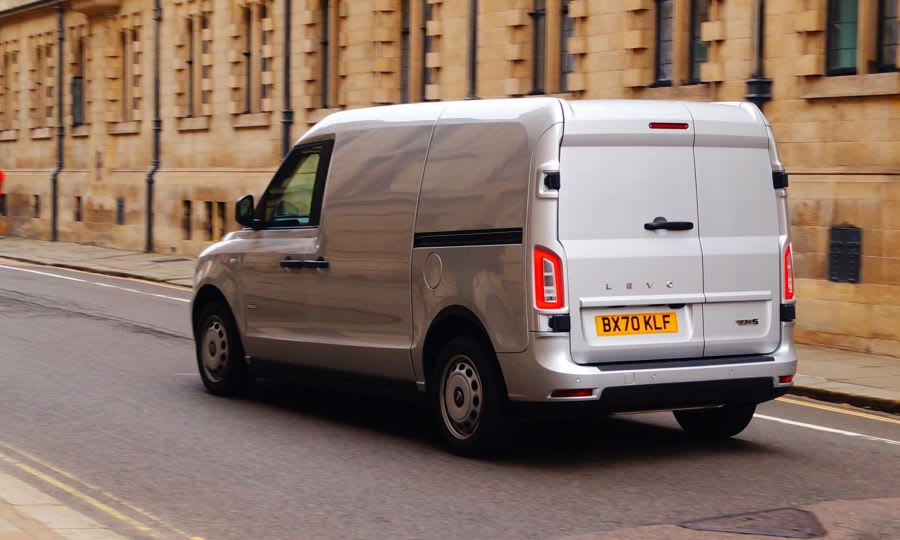
LEVC VN5 Electric Van Review

Introduction
“The London Taxi would make a great van,” somebody must have exclaimed in the LEVC offices. Nobody stopped them, so we’ve got a distinctive compact van with interesting money-saving technology.
The result is a van that, with its emissions-free motor and petrol-powered backup, might just be perfect for some urban businesses. Can it compete against a dedicated model, though?
Select's rating score* - 3.6 / 5
At a Glance
The LEVC VN5 is an electric van with a difference - it’s got a petrol engine! It uses the engine to produce electricity for the motor once the battery has been depleted, so you may never need to use a drop of petrol if you stay within the battery's range.
Available in just one body style but with three trim levels, even the most basic model is well equipped and has a well-proportioned cargo area.
With distinctive styling and the limitations, however mitigated, of an electric powertrain, the VN5 won’t be for everybody but, for the right business, it’ll be brilliant.

Key Features
By opting for a range extender rather than a more traditional hybrid, LEVC has created a van without the practical issues you face with a pure electric van. With no risk of being stranded with an empty battery pack, the ability to traverse the country without thinking of stopping to recharge, and the choice to run on nothing but electricity in the city to keep the urban air cleaner, the VN5 offers a compelling choice for business.
For the owner-operator or small business, the distinctive style of the VN5, closely resembling the Electric Taxi that it’s based on, grabs attention from passers-by. If your business needs to stand out on the streets, then it’s a sure-fire way to get your name in front of unlimited eyeballs.
But none of that is any use if it doesn’t do the job of being a van. Happily, it’s got a cargo area that’s large enough to accommodate most needs, with a payload that’ll tackle all but the heaviest of loads. Throw in that it’s great to drive and comes loaded with tech and there’s a lot to like about the LEVC VN5.
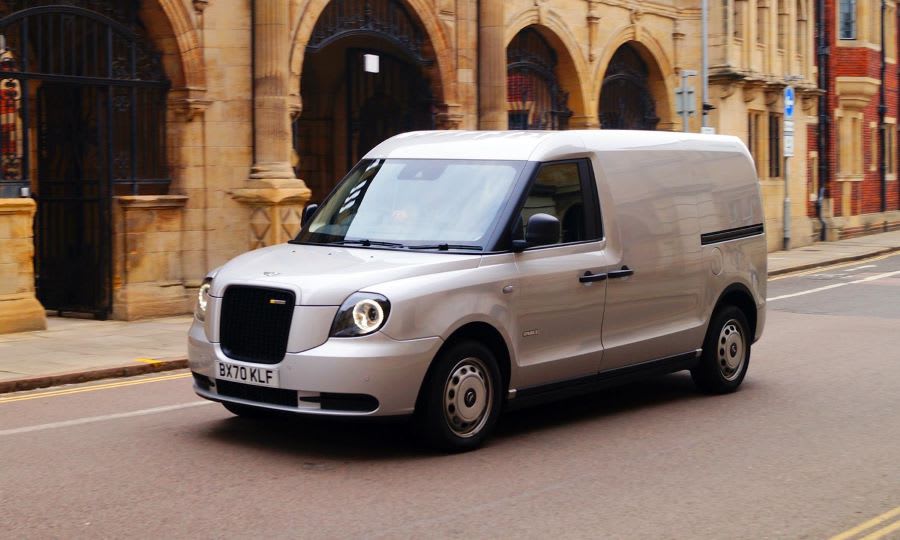
Performance & Drive
LEVC calls the VN5 an electric van but, while that’s technically accurate, it’s not the whole story; there’s a 1.5-litre petrol engine under the bonnet, but it never drives the wheels. Instead, it charges the battery pack that provides energy to the 110kW electric motor that does the hard work. Want to know more about how that converts? We've got a helpful guide on what kWh and kW really mean.
With 147hp available, and 240Nm of torque on tap, performance is sprightly. The electric motor drives the rear wheels, with the instant responses you would expect from an EV. There’s no turbo lag, and no delay as you wait for an automatic gearbox to catch up - there are no gears, with the motor simply spinning more quickly to generate more power.
Once rolling, it’s quite good fun to drive, and amongst the best on the commercial vehicle market. The steering is precise and light, with the brakes well-weighted and resisting the inconsistency that plagues many electric models.
The soft suspension covers off most imperfections in the road quite nicely, with the low-slung battery pack (it’s mounted under the floor of the van) keeping the centre of gravity down. That aids handling, particularly in corners, where the LEVC NV5 feels pleasingly well planted.
In the city, you’ll benefit from a comically tight turning circle. At 10.1 metres, it’s a little more than the London Taxi that the van is based on (but understandable as it has a longer wheelbase) but still almost three metres tighter than, say, a Ford Transit Custom
Running Costs
An electric van should be cheap to run, but the LEVC VN5 also has a petrol engine under the bonnet, so how much fuel will it use? The answer is… it depends.
The official fuel economy figure is a massive 313.9mpg, but you may do much better than this, or much worse.
How so? The battery that powers the electric motor will expire after 60 miles (at least officially, so expect 45-50 miles under normal use) at which point the petrol engine takes over and produces electricity to drive the motor. You’ll get 30.7mpg at that point (again, officially) which makes it quite thirsty.
However, if your daily mileage is around 50 miles or less, or you get the chance to rapid charge while out on the road - a flat to full charge takes about 30 minutes - then you’ll never use a drop of fuel. To make your charging more efficient, be sure to take a look at our guide on picking your ideal charger.
This creates all sorts of possibilities, including using petrol power to reach a city centre before switching to emission-free electric motoring in the urban sprawl.
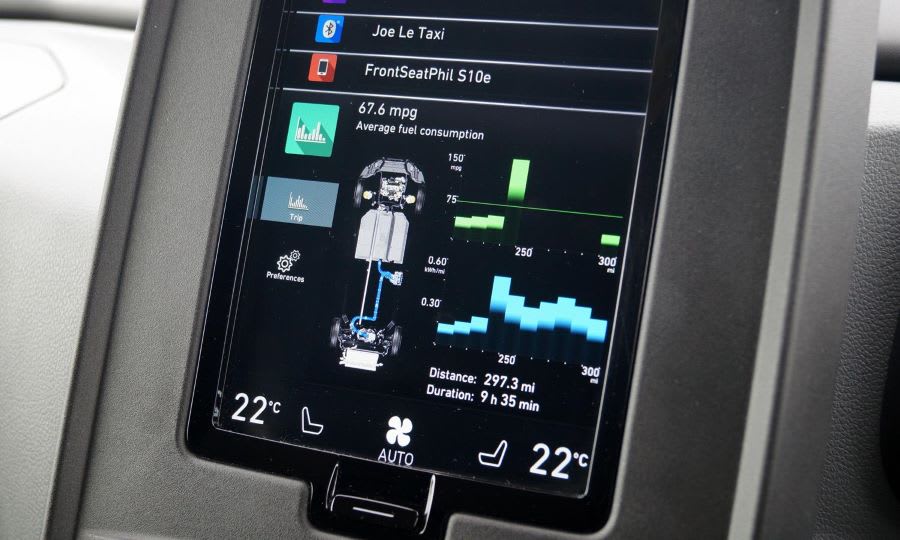
After a long week of mixed roads, from Cambridge City Centre to runs up and down the M1, our test model returned an average of just under 70mpg. That could have been improved to around 80mpg if I’d not left my wallet and phone at home on one long journey, preventing me from recharging. That situation showed one benefit of the petrol range extender though, as it meant I wasn’t left stranded.
Thanks to the van’s electric range, it’s eligible for the government’s plug-in van grant, knocking £5,000 off the list price - something that will be reflected on your monthly lease payments. Servicing costs are low, with intervals of 25,000 miles or one year. A comprehensive warranty runs for five years or 150,000 miles, which is more than enough to cover any lease agreement.
All told, LEVC’s figures suggest the VN5 will cost around 39p per mile to run, including all your costs. That’s a little less than the Ford Transit Custom PHEV and a lot less than the Mercedes-Benz eVito. Independent figures put the LEVC and Ford much closer together, separated by less than 2p per mile.
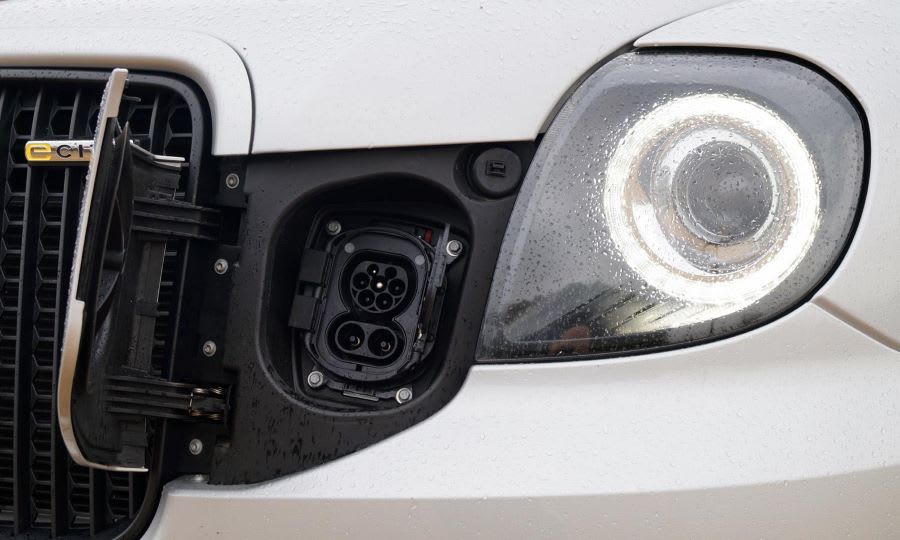
Interior and Technology
The cabin of the LEVC VN5 is an odd mix of rugged hard plastics and high-quality Volvo parts. Chief amongst the latter are the two digital displays; one sits in front of the driver as an instrument panel, bringing together all the essential information you need in a clear form. In the centre console is the 9.0-inch infotainment system, mounted vertically.
Lifted straight from every current Volvo, the screen and software are easy to use, with all the essential buttons being large enough to prod with a vaguely pointed finger. Less frequently used functions are hidden away in a menu accessed by swiping sideways but, once you’ve got it set up, you’re likely to never look at this.
It would be nice if you could adjust the temperature in the cabin without needing to use the infotainment screen, but the climate controls are only accessible digitally. At least it works well.
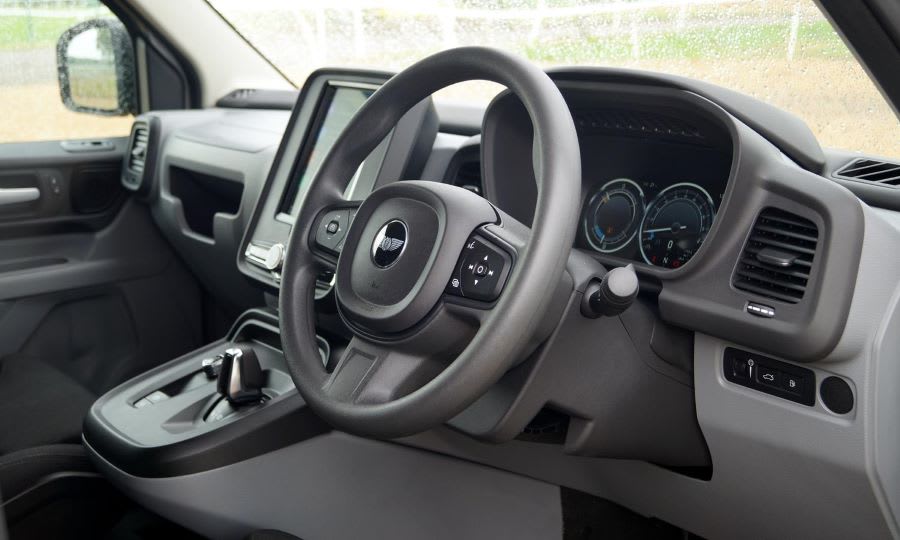
You sit quite high in what is a relatively compact cabin - a nod to its taxi roots - which, when combined with a low bonnet and large windscreen, gives a great view of the road ahead. The rear view isn’t quite so great, but the Ultima spec tested here benefits from a reversing camera.
Cabin storage is comprehensive, despite the compact nature of the VN5, with document clots, door bins and, on the top two trim levels, under-seat storage. This is more important than it may appear at first as there’s no glovebox, leaving the under-seat area as the only storage that keeps things out of view.
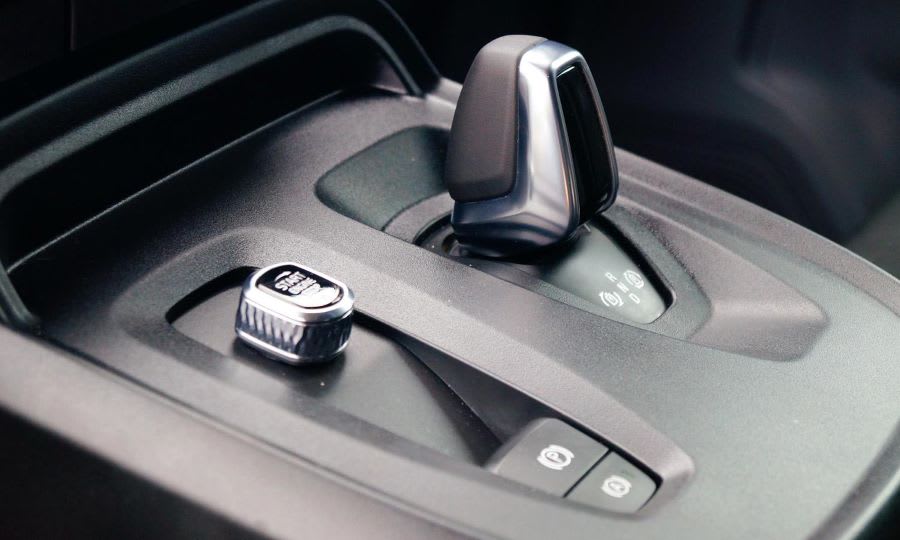
Payload and Practicality
Given its unusual beginnings, borrowing heavily from the Electric Taxi, it’s a surprise at just how capacious the back of the VN5 is.
The payload limits aren’t as high as its rivals, reaching just 830kg on the Business and City spec models, but that’s still pretty good for an electric van. You do lose about 50kg by choosing the top-spec Ultima, but that might be a penalty you're happy to pay.
If it’s volume you’re after, then the VN5 does rather better. The floor is a tiny bit under 2.5 metres long, at 2,447mm, with a maximum width of 1,574mm and a height of 1,373mm. All told, you’ll be able to slide two Euro pallets in the back, with room to spare, and stack up to 5.5m3 of cargo in the back.
It’s easy to get the load in there, thanks to a side door space that’s up to 1,228mm wide (although it does taper to 938mm at the top) and a pair of asymmetric rear doors. This allows easy access for quick drops, and open wide to reveal a 1,253mm wide aperture. A low rear load height of just 640mm makes for easier manual loading, too.
A solid full-height bulkhead keeps any load safely away from the cabin.
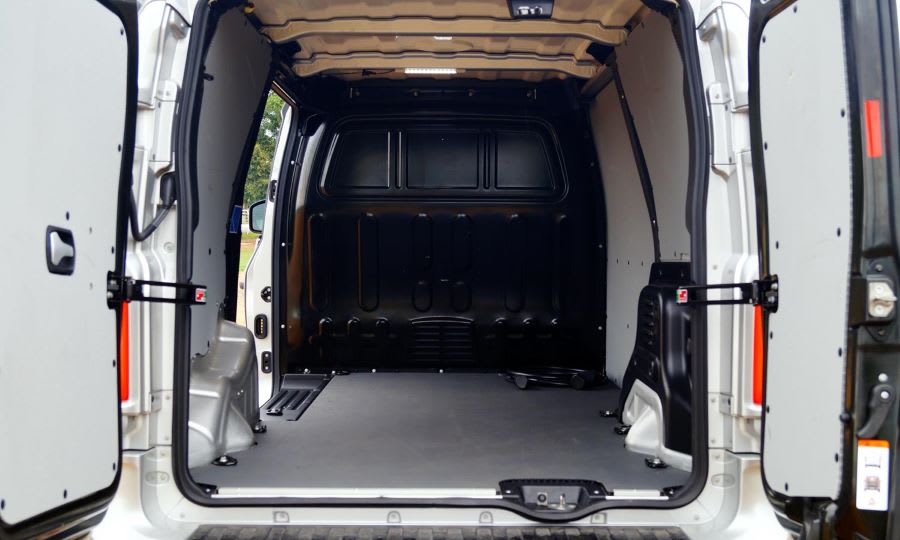
Safety
Euro NCAP hasn’t put the LEVC VN5 through its stringent crash safety testing, but there are plenty of reasons to assume that it will serve you well.
For a start, it’s built using aluminium, which absorbs twice the energy of steel in a collision. And, if there is a collision, there are front and side airbags to keep you protected.
However, the key is to avoid an impact in the first place, and the VN5 has a range of safety technologies to try and keep you away from anything solid. Every model comes fitted with an automatic emergency braking system with an early warning alarm that detects pedestrians and cyclists as well as solid objects and other vehicles. An early warning system gives you a heads up that you might need to take avoiding action.
City and Ultima grades add a safety pack that includes curtain airbags, a programmable speed limiter, road sign recognition and lane departure warnings. All models are fitted with anti-lock brakes and stability control too, as you would expect.
Options
Three trim levels should offer a suitable choice for most. The range starts with the well-equipped Business model - it’s got the essentials such as climate control, a 9.0-inch infotainment screen, keyless start and automatic lights and wipers. The City spec adds a heated windscreen and parking sensors all around, as well as a few extra bits of safety tech. The top of the range Ultima model tops that with some added style, heated seats, satellite navigation and a reversing camera.
It’s possible to create an exacting specification just for you but, while the options list is long and comprehensive, it’s likely to be cheaper to simply upgrade to the next trim level rather than try to build something specific.
Outside of paint options (from £300 to £690 plus VAT), the most useful option is likely to be the removal of some equipment; it’s possible to remove the passenger seat and extend the cargo area right up to the front of the vehicle.
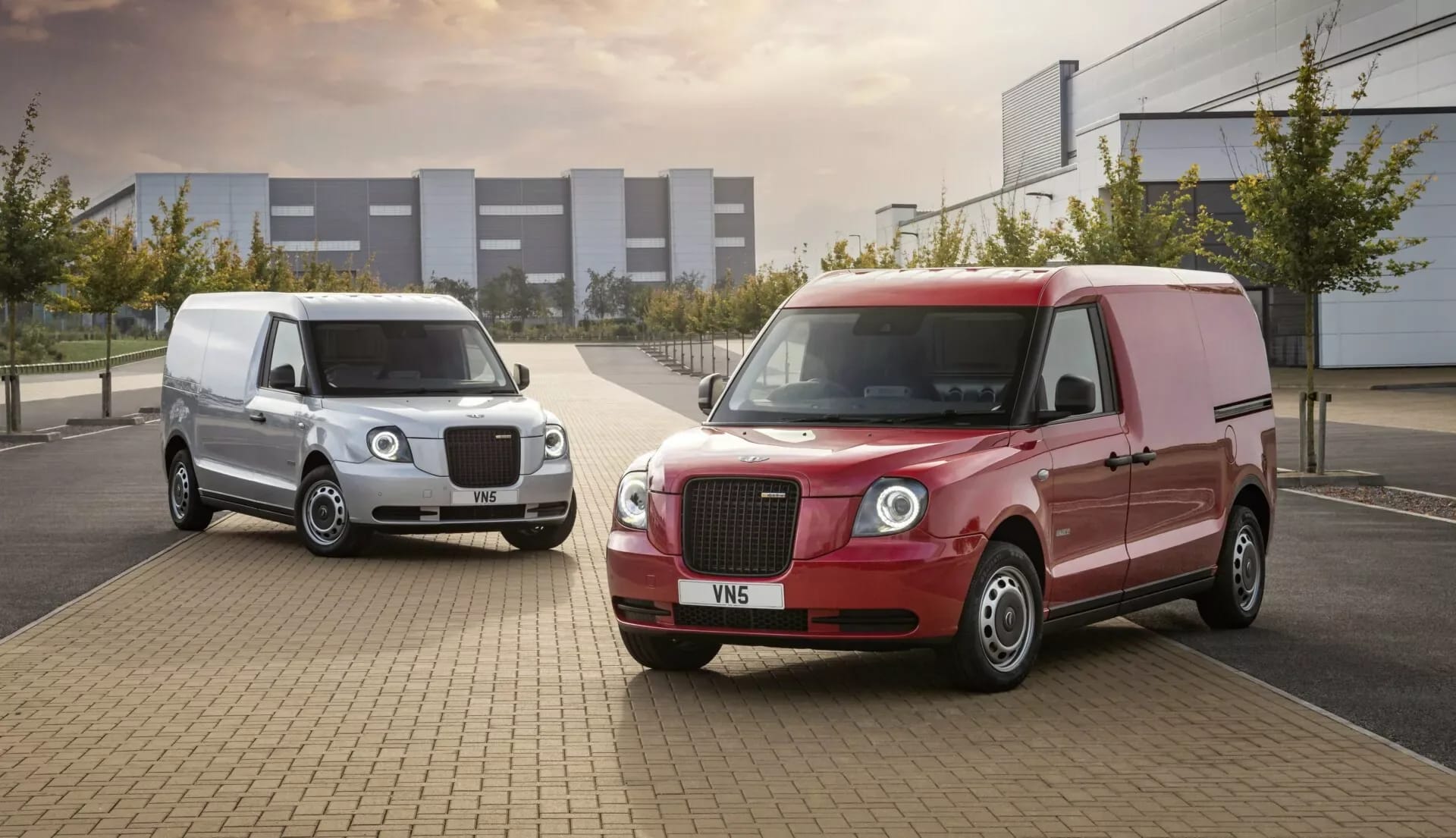
Rival Vans
By adding a petrol-powered range extender, the LEVC differentiates itself from most of the market. The only plug-in hybrid van that can rival the VN5 is the Ford Transit Custom. The Ford is larger, has a greater cargo capacity and benefits from a far wider servicing network. It can’t get close to the LEVC’s electric range, though.
Pure electric vans are getting more common, with the near-identical vans from Citroen, Peugeot and Vauxhall all offering 200+ mile ranges.
The Toyota Proace Electric is an outlier, with the Japanese brand borrowing the Citroen/Peugeot van as a base but promising an owner-operator focussed maintenance network.
The Maxus e Deliver 3 is a little smaller, but might well suit some customers.
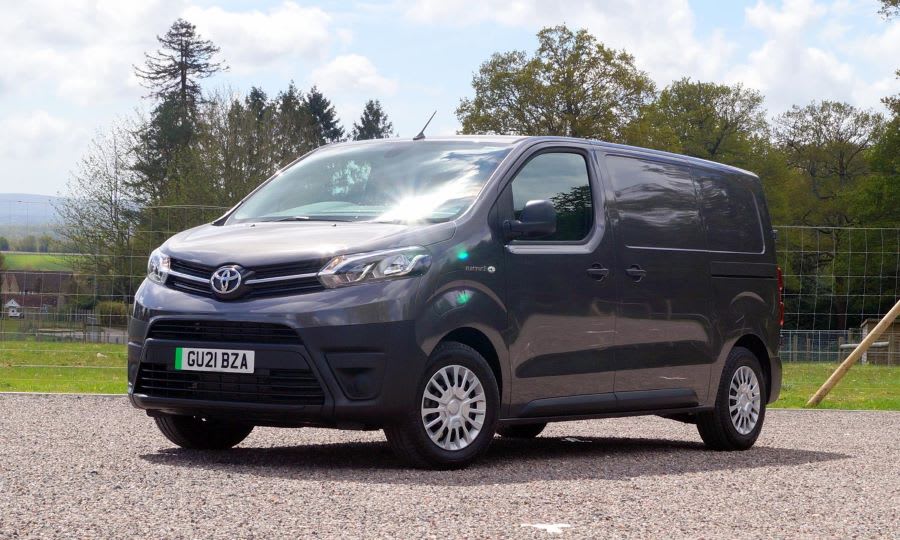
Verdict
We like the LEVC VN5, especially when ordered on a lease deal; that masks the rather significant price tag, leaving monthly costs competitive with the Ford Transit Custom Plug-in Hybrid.
It’s amongst the very best vans to drive - diesel, petrol or electric - and has been designed intelligently to accommodate what owner-operators and small business owners need. For many, it’ll perform its daily duties on pure electric power, but there’ll never be any range anxiety thanks to the onboard petrol generator.
If the maximum payload limits aren’t an issue, and you spend most of your time in urban environments, the VN5 makes a huge amount of sense.
Where to next?
View latest LEVC VN5 Electric Van leasing deals- guide price from £717.59 per month inc VAT**
Looking for a great leasing deal? Check out our incredible range of Special Offers
New van or pick-up? Read our latest Van Reviews and find the right model for you
Want to know more about van leasing? Take a look at our comprehensive Van Leasing Guides
Interested in everything motoring? Why not catch up on all the latest Leasing News.
*Score based on Select’s unique meta score analysis, taking into account the UK’s top five leading independent car website reviews of the LEVC VN5 Electric Van
**Correct as of 28/04/2022. Based on 9 months initial payment, 5,000 miles over a 48 month lease. Initial payment equivalent to 9 monthly payments or £6,458.31Ts and Cs apply. Credit is subject to status.
